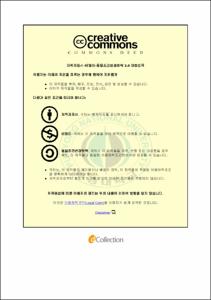방음구조 설계를 위한 이종금속 특수접합공법의 충격 소음 특성 분석
- Alternative Title
- Impulse Noise Assessment of Dissimilar Metal Cladding Using Blast Energy For Noise Insulating Structure Design
- Abstract
- Recently, a specific applied cladding method by rapidly accelerating cladder metal to the backer(the parent metal) using explosive energy enables each dissimilar metals welds overall surface. For its such chemical and physical advantage, It is used to the specific commercial and military purpose and domestic technical development is in progress recently. But The noise from blast has been provoking a complaints from the neighboring residents. So the necessity of blast noise assessment is raised prior to the explosion resistive and sound insulating structure design.
The scope of this study includes noise assessment by simulation, repetitive site measurement of impulsive sound of detonating more than 20kg of TNT-equivalent explosives and proposal of sound insulation design. The measurement configurated as 3 steps. The 1st step is test blast to determine the close measurement range and methode of 2nd step. The 2nd step is close blast test to determine blast sound source and the 3rd step is actual place blast measurement to obtain actual community noise countermeasure design.
According to those assessment described above, corrected noise prediction method of USBM equation suggested by National Environmental Dispute Resolution Commission, a government-affiliated organization of Korea, is not applicable to the studied type of impulse noise. If the sound source is properly determined, a general outdoor noise simulation software adopting ISO 9613 noise propagation calculation method is applicable to the impulsive sound prediction for community noise assessment. The time duration characteristics is similar to the that of impulsive sound described in ISO 10843. The dynamic pressure of blast is proportional to the distance from explosives and inversed cube root of explosive mass. The sound insulation design should focusd on the 16 Hz and 31.5 Hz, the measured peak frequency of explosion.
The suggested future study subject based on this study is defining the characteristics of semi-confined blast, development of low-frequency impulsive sound measurement and evaluation method and effective insulation of low-frequency impulsive sound including 16Hz and 31.5 Hz frequency range.
- Issued Date
- 2011
- Awarded Date
- 2011. 2
- Type
- Dissertation
- Publisher
- 부경대학교
- Alternative Author(s)
- Jeong, Seong Geun
- Affiliation
- 부경대학교 대학원
- Department
- 대학원 건축공학과
- Advisor
- 임영빈
- Table Of Contents
- 1. 서론 1
1.1 연구의 배경 및 목적 1
1.2 연구의 범위 및 방법 2
2. 충격소음 이론 고찰 4
2.1 충격 소음의 정의 및 특성 4
2.2 폭발 조건에 따른 분류 7
2.3 발파진동과 소음의 차이점 11
2.4 폭발 소음 측정 및 평가 방법 12
2.4.1 센서의 선정 12
2.4.2 평가 단위 12
2.5 폭발소음의 예측 방법 13
2.6 발파소음 허용기준 16
2.6.1 국내 기준 16
2.6.2 외국 기준 19
3. 현장 발파 소음 측정 및 시뮬레이션 21
3.1 측정 시스템 21
3.2 1단계 시험 발파 25
3.3 2단계 근거리 측정 27
3.4 3단계 발파소음 음향시뮬레이션 및 현장측정 35
3.4.1 발파소음 시뮬레이션 36
3.4.2 소음 실측 및 비교 38
4. 폭발소음 차단을 위한 방음구조 설계 39
4.1 방음구조 설계 개요 및 조건 39
4.2 방음설계 목표수준 결정 40
4.3 방음 대책 설계 42
5. 결론 44
참고 문헌 46
Abstract 50
감사의 글 52
- Degree
- Master
- Files in This Item:
-
-
Download
 방음구조 설계를 위한 이종금속 특수접합공법의 충격 소음 특성 분석.pdf
기타 데이터 / 3.15 MB / Adobe PDF
방음구조 설계를 위한 이종금속 특수접합공법의 충격 소음 특성 분석.pdf
기타 데이터 / 3.15 MB / Adobe PDF
-
Items in Repository are protected by copyright, with all rights reserved, unless otherwise indicated.